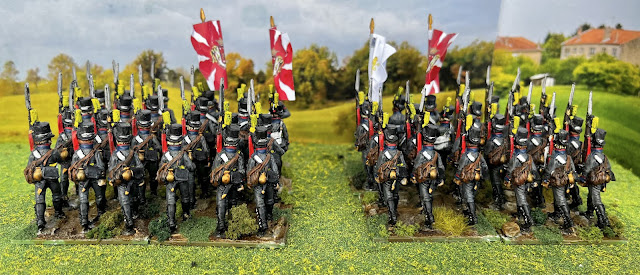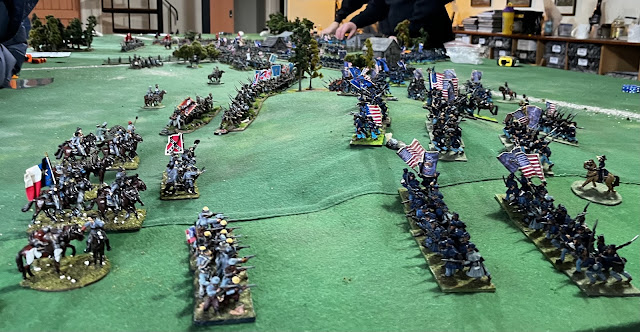According the Google translate “färdiga” means “finished”, and finished this Swedo-Finnish army is…well apart from the generals, so maybe it should be “nästan färdig” (again consulting the gospel according to Google this means “almost finished” - apologies to any Swedish speakers if this has an incorrect or offensive meaning). As I type this I thought I could have been really smart and said “Finnished!” I always seem to think of the smart comments after the fact.
The final unit in the Swedish Napoleonic collection is the Tavastehus Infantry Regiment. Recruited from Tavastehus County (Hämeenlinna in Finnish), an inland region immediately north of modern day Helsinki, it could trace its ancestry back to 1626. The regiment participated in the Thirty Years' War in Pomerania, and in Charles X Gustav's Polish War in 1655. In the Great Northern War it first garrisoned Riga then Viborg, surrendering to the Russians when that fortress fell in 1710.
 |
| The regimental colours |
Reformed, the regiment operated in the southeastern section of Finland and was later involved in the Norwegian Campaign of 1718. In 1741 it was engaged with Russia in the Hats War (that although it would make an interesting background for a campaign was not fought over hats, but was named after the Swedish Hats political party who sought to recover land lost in the Great Northern War) and fought at the Battle of Lappeenranta. It fought the Russians again in Gustav III's Russian War in 1788–1790.
In 1792 the regiment was expanded, incorporating the Uusimaa and Hämeenlinna dragoon regiments. It was heavily involved in the Finnish War of 1807-09, fighting in most of the early battles, but surrendered along with most of the Finnish Army at Kalix in March 1809. At the conclusion of the war the regiment was disbanded.
Above are the two battalions: the first on the left, the second on the right.

















































